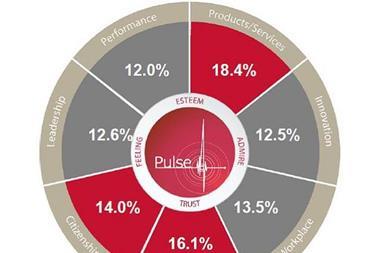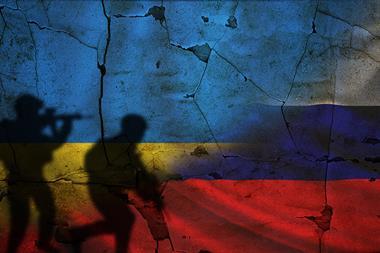StrategicRISK’s bold and dramatic cover images tell the story and history of this magazine and the risk management profession
A magazine cover sets the tone and flavour of its contents. While always weary of fear mongering, StrategicRISK’s bold and dramatic cover images tell the story and history of this magazine and the risk management profession. Here we take a look back at our favourite covers from the past decade.
July 2009
Following the banking crisis and the collapse of HBOS, one of Britain’s biggest banks, SR interviewed Paul Moore, seen here on the cover of our July issue. Moore was HBOS’s head of regulatory risk who was fired after he raised concerns about the bank’s overly sales driven culture. In an explosive interview he blamed the financial crisis on a culture of greed that went right to the top of Britain’s biggest banks and its political establishment.
May 2009
“The recent anti-capitalism G20 protests in London illustrate the discontent that is spreading across the globe,” read our May 2009 cover feature. This dramatic picture of police forces battling protesters outside Bank tube station in Central London seemed to signify the general mood of seething discontent, sparked by political unease, rising unemployment and inflation. The bigger the economic shocks the greater the likelihood of social unrest and conflict, predicted SR.
January 2009
Our cover in January 2009 featured a Chechen rebel fighter and it formed part of a story that examined the risks to organisations that send people to dangerous parts of the world. In it we interviewed a kidnap victim who had been held in captivity for six months at the height of the brutal Chechen war. While the official advice is never pay ransoms, in many cases they are paid and this sustains the foul kidnap trade.
April 2008
A trading scandal at French bank Societe General highlighted the weaknesses in the internal controls of some major financial institutions. Was this an early warning of things to come? On our April 2008 cover was the trader at the center of the scandal, Jerome Kerviel. Inside, SR revealed that the problems at the French bank were exacerbated by a complex trading environment, globalization and increased technology risks, a failure to segregate duties as well as a focus on short term profitability. It was just one indication of the scale of the problem with risk oversight in financial firms.
November 2007
The investigation into insider trading at EADS, the European aerospace company, was not a happy way for the company to celebrate the maiden commercial flight of its A380 Airbus in 2007. It did indicate that regulators were beginning to take the insider trading issue very seriously and that companies should comply or face disaster, as we said in our November cover story.
September 2006
There are opportunities to learn from the experience of complying with one of the most significant pieces of risk and control legislation in recent memory, said SR’s “Life After Sox” cover story. We even dared to suggest that the Sarbanes Oxley Act (Sox) brought substantial gains, including more assurance on financial risk. The banking crisis indicated that we may have been wrong to do so!
November 2005
SR introduced readers to a powerful and increasingly popular risk assessment technique known as the “bow tie” method. It goes beyond the usual risk assessment snapshot and highlights the links between risk controls and the management system, we explained.
Elsewhere in this issue, Editor, Sue Copeman railed about another issue close to the hearts of many risk managers: “The words on everyone’s lips now are contract certainty. It is appalling that buyers do not get final confirmation of wordings when they agree the contract. It has to be said also, that issuing a bland cover agreement without any legal information back up can be a danger for insurers too. The dispute over whether the destruction of the World Trade Center constituted a single event or two is just one illustration that without contract certainty the only winners are the lawyers.”
December 2004
SR shed light on the level of risk presented by future unknowns such as wireless technology, climate change, the MMR vaccination, genetically modified foods and nanotechnology.
In this issue we also reported on the New York Attorney General’s inquiry into broker remuneration. “Spitzer’s inquiry has sent ripples of unease—and in some cases outrage—through the European risk management community, intensifying demands for much greater transparency,” said SR. Shamefully, the practice still continues today.
June 2003
SR explained how companies should prepare to defend themselves against the threat of chemical, biological and nuclear weapons. The nature of the dispersal of these weapons makes them attractive to terrorists and they remain a serious, if remote, threat.
June 2002
Maintaining business continuity in the face of a disaster is a key issue in an age of global competition, just-in-time delivery and single source suppliers, indicated SR in June 2002. In this issue we provided practical advice on how to continue to maintain a flow of goods and services and recover a business in the face of a crisis.
June 2001
With fund managers starting to doubt the long term growth potential of companies that ignore their social and environmental responsibilities and public tolerance also wearing thin, SR warned that exposure could damage a company’s brand, reputation and sales. At the time we said: “Potentially violent attacks by eco-freedom fighters mean that a law suit can be a best-case scenario.”
September 2000
A series of famous disasters in which people were killed by apparent negligence and the companies responsible escaped without prosecution encouraged us to write our lead feature about corporate killers. Lawmakers were in the initial stages of etching the Corporate Manslaughter Act and these changes to corporate accountability urged SR to warn its readers that their company directors could soon be imprisoned and that Corporate Manslaughter prosecutions would damage share price along with reputation.



















